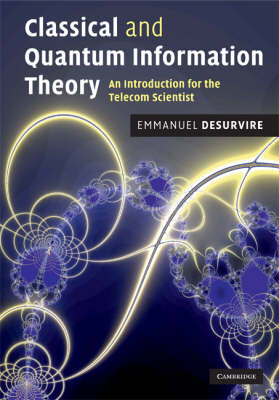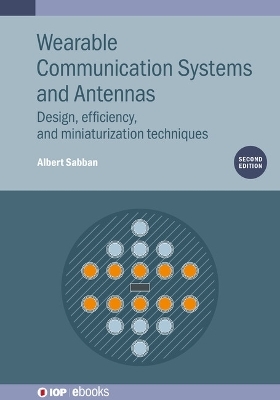
Classical and Quantum Information Theory
Cambridge University Press (Verlag)
978-0-521-88171-5 (ISBN)
Information theory lies at the heart of modern technology, underpinning all communications, networking, and data storage systems. This book sets out, for the first time, a complete overview of both classical and quantum information theory. Throughout, the reader is introduced to key results without becoming lost in mathematical details. Opening chapters present the basic concepts and various applications of Shannon's entropy, moving on to the core features of quantum information and quantum computing. Topics such as coding, compression, error-correction, cryptography and channel capacity are covered from classical and quantum viewpoints. Employing an informal yet scientifically accurate approach, Desurvire provides the reader with the knowledge to understand quantum gates and circuits. Highly illustrated, with numerous practical examples and end-of-chapter exercises, this text is ideal for graduate students and researchers in electrical engineering and computer science, and practitioners in the telecommunications industry. Further resources and instructor-only solutions are available at www.cambridge.org/9780521881715.
Emmanuel Desurvire is Director of the Physics Research Group at Thales Research and Technology, and has held previous positions at Stanford University, AT&T Bell Laboratories, Columbia University and Alcatel. With over 25 years' experience in the field of optical communications, he has received numerous recognitions for his scientific contributions, including the 1998 Benjamin Franklin Medal in Engineering, the 2005 William Streifer Scientific Achievement Award, and, in 2007, the IEEE/LEOS John Tyndall Award, Engineer of the Year Award and the France-Telecom Prize of the Académie des Sciences.
1. Probabilities basics; 2. Probability distributions; 3. Measuring information; 4. Entropy; 5. Mutual information and more entropies; 6. Differential entropy; 7. Algorithmic entropy and Kolmogorov complexity; 8. Information coding; 9. Optimal coding and compression; 10. Integer, arithmetic and adaptive coding; 11. Error correction; 12. Channel entropy; 13. Channel capacity and coding theorem; 14. Gaussian channel and Shannon-Hartley theorem; 15. Reversible computation; 16. Quantum bits and quantum gates; 17. Quantum measurments; 18. Qubit measurements, superdense coding and quantum teleportation; 19. Deutsch/Jozsa alorithms and quantum fourier transform; 20. Shor's factorization algorithm; 21. Quantum information theory; 22. Quantum compression; 23. Quantum channel noise and channel capacity; 24. Quantum error correction; 25. Classical and quantum cryptography; Appendix A. Boltzmann's entropy; Appendix B. Shannon's entropy; Appendix C. Maximum entropy of discrete sources; Appendix D. Markov chains and the second law of thermodynamics; Appendix E. From discrete to continuous entropy; Appendix F. Kraft-McMillan inequality; Appendix G. Overview of data compression standards; Appendix H. Arithmetic coding algorithm; Appendix I. Lempel-Ziv distinct parsing; Appendix J. Error-correction capability of linear block codes; Appendix K. Capacity of binary communication channels; Appendix L. Converse proof of the Channel Coding Theorem; Appendix M. Block sphere representation of the qubit; Appendix N. Pauli matrices, rotations and unitary operators; Appendix O. Heisenberg Uncertainty Principle; Appendix P. Two qubit teleportation; Appendix Q. Quantum Fourier transform circuit; Appendix R. Properties of continued fraction expansion; Appendix S. Computation of inverse Fourier transform in the factoring of N=21 through Shor's algorithm; Appendix T. Modular arithmetic and Euler's Theorem; Appendix U. Klein's inequality; Appendix V. Schmidt decomposition of joint pure states; Appendix W. State purification; Appendix X. Holevo bound; Appendix Y. Polynomial byte representation and modular multiplication.
| Erscheint lt. Verlag | 19.2.2009 |
|---|---|
| Zusatzinfo | Worked examples or Exercises; 59 Tables, unspecified; 1 Halftones, unspecified |
| Verlagsort | Cambridge |
| Sprache | englisch |
| Maße | 179 x 253 mm |
| Gewicht | 1550 g |
| Themenwelt | Technik ► Nachrichtentechnik |
| ISBN-10 | 0-521-88171-4 / 0521881714 |
| ISBN-13 | 978-0-521-88171-5 / 9780521881715 |
| Zustand | Neuware |
| Haben Sie eine Frage zum Produkt? |
aus dem Bereich


